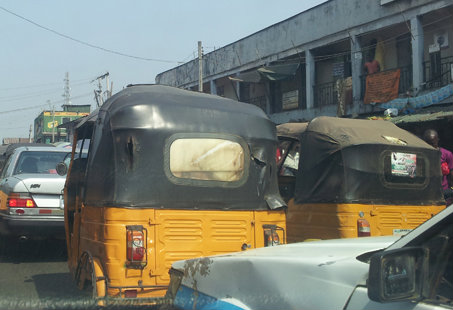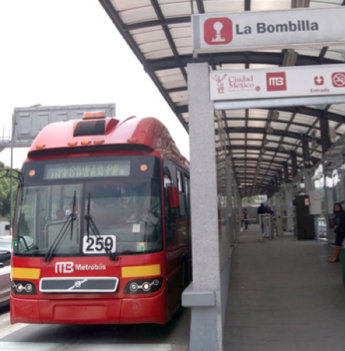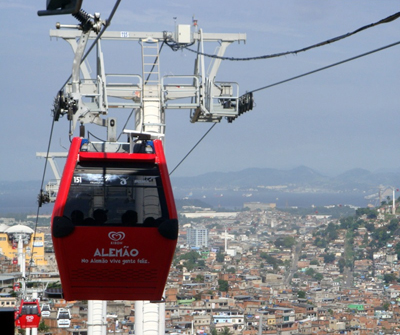Transportation in the developing world is notoriously difficult, especially in urban centers. Lack of planning, rapid urbanization, and overcrowding are some of the issues residents face on a daily basis. Many current forms of urban transportation are inefficient, unsafe, and unsustainable. The following five examples are from cities attempting to create an efficient and affordable transportation system.
Mumbai's millions of commuters rely on a woefully outdated, overcrowded, and dangerous public transportation system. The government has responded with a list of mega-projects that only benefit the top car-owning tier of the city, like sealinks and flyovers. Given the needs of burgeoning urban population, transport innovations need to instead focus on serving the masses with Bus Rapid Transit and improved rickshaw fleets.

In Nairobi, matatus (14-seater mini-vans) are the main form of transportation for hundreds of thousands of the city's workforce, but have recently become a source of anger as they are seen as the main source of Nairobi's famously gridlocked traffic. The Kenyan government responded by introducing a traffic act to regulate common reckless driving habits and reduce driving-related accidents. The new fines are much higher than the drivers' earnings, forcing them to bribe policemen to overlook the infringement, and worsening Nairobi's corruption problem. Critics also point out that the government has done nothing to encourage matatu owners to employ drivers permanently, preferring instead to hire them by the day at a fixed rate without any benefits or insurance.
 In an effort to combat the worsening traffic congestion in Lagos, the government introduced an innovative form of transport, the keke, which is a privately held and safe transportation solution for urban residents. It represents a progressive government-led strategy to tackle Lagos' congestion and development problems. While the keke is becoming a popular form of transportation, putting structures in place to guarantee funding and to maintain low costs is key to making this form of transportation successful in the long run.
In an effort to combat the worsening traffic congestion in Lagos, the government introduced an innovative form of transport, the keke, which is a privately held and safe transportation solution for urban residents. It represents a progressive government-led strategy to tackle Lagos' congestion and development problems. While the keke is becoming a popular form of transportation, putting structures in place to guarantee funding and to maintain low costs is key to making this form of transportation successful in the long run.
 The urbanization of Mexico City has not been planned or orderly, making transportation one of the most contentious issues in the city. Since 2006, the Federal District Government has proposed to improve the city's mobility by laying the foundation for an integrated transport policy. Strategies such as the Metrobus lines and a public bicycle program ECOBICI have been transformative. However, challenges remain, like providing equal access to the most vulnerable populations, and facilitating transfers between different types of transportation.
The urbanization of Mexico City has not been planned or orderly, making transportation one of the most contentious issues in the city. Since 2006, the Federal District Government has proposed to improve the city's mobility by laying the foundation for an integrated transport policy. Strategies such as the Metrobus lines and a public bicycle program ECOBICI have been transformative. However, challenges remain, like providing equal access to the most vulnerable populations, and facilitating transfers between different types of transportation.

In Rio de Janeiro, the government introduced a new cable car service in Complexo do Alemão, an agglomeration of low-income neighborhoods known for its precarious housing and lack of urban and social infrastructure. This new form of transportation has been key in improving the mobility for the area's residents, providing an essential solution to previous accessibility and security issues. The cable car has also become a positive asset within the community, creating income opportunities, and bringing tourism and visibility to the neighborhood.
Offering sustainable transportation services through creative innovations not only helps commuters travel more quickly and easily throughout the city; it improves inclusion and accessibility while reducing congestion, danger and pollution. Join us on URB.im to read more about these solutions and to join the conversation.